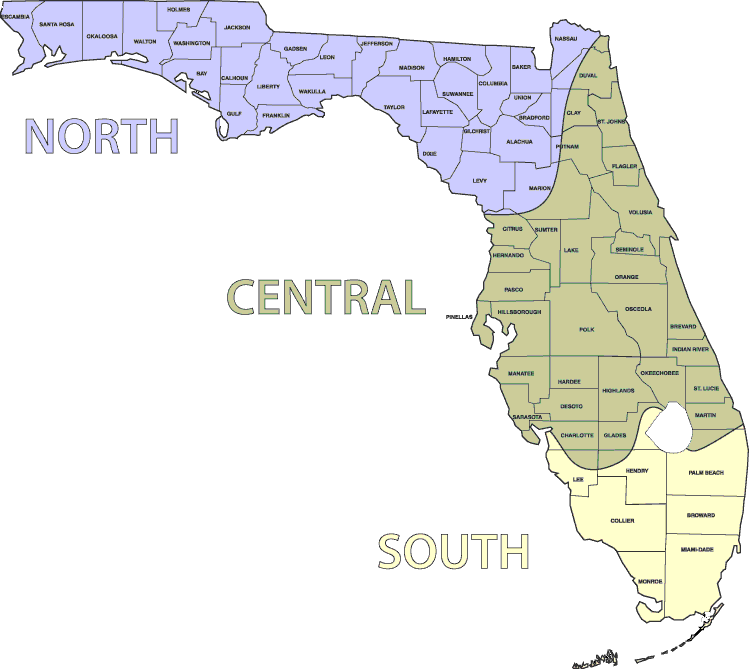Carrot Varieties for Florida
Carrots, with their vibrant orange roots and feathery green tops, bring a bright and cheerful touch to any garden. These root vegetables are known for their sweet flavor and crunchy texture. Their slender, tapering roots and delicate foliage make carrots an attractive addition to garden beds or containers.
In Florida planting zone 9, carrots grow well, particularly in the mild climate of fall and winter. The roots develop underground, creating a hidden treasure waiting to be unearthed. The sight of these colorful roots peeking through the soil is a delightful reward for any gardener.
For those new to gardening, carrots are an excellent choice. They are relatively easy to grow and offer a bountiful harvest of nutritious roots. Whether you enjoy them raw, roasted, or in soups, carrots add a delicious and healthy element to your meals, making your gardening efforts truly rewarding.
I would give carrots a 4 out of 5 on how easy they are to grow. They are relatively straightforward to cultivate, making them suitable for both beginners and experienced gardeners.
Nantes
Heirloom

Description: Nantes carrots are known for their cylindrical shape, blunt tips, and sweet, crisp flavor. They are versatile and perform well in a variety of soil types.
Growing Season: Fall and Winter
USDA Planting Zone: 3-10
Special Notes: Nantes carrots are early-maturing and have excellent texture, making them a favorite for fresh eating and juicing.
Danvers
Heirloom

Description: Danvers carrots have a tapered shape and deep orange color. They are known for their rich flavor and high carotene content.
Growing Season: Fall and Winter
USDA Planting Zone: 3-9
Special Notes: Danvers carrots are highly adaptable and perform well in heavy or clay soils. They are also excellent for storage.
Imperator
Heirloom

Description: Imperator carrots are long, slender, and have a deep orange color. They are commonly grown for commercial use and are known for their sweet taste and crunchy texture.
Growing Season: Fall and Winter
USDA Planting Zone: 3-10
Special Notes: Imperator carrots require loose, deep soil to develop their long roots properly. They are ideal for fresh market use.
Chantenay
Heirloom

Description: Chantenay carrots are shorter and have a broad shoulder with a tapered root. They are sweet and tender, making them great for cooking and juicing.
Growing Season: Fall and Winter
USDA Planting Zone: 3-10
Special Notes: Chantenay carrots are very adaptable and can grow well in heavier soils. They store well and maintain their flavor.
Little Finger
Heirloom

Description: Little Finger carrots are small, cylindrical, and have a very sweet flavor. They are perfect for snacking and can be harvested early as baby carrots.
Growing Season: Fall and Winter
USDA Planting Zone: 3-10
Special Notes: Little Finger carrots mature quickly and are great for container gardening. They are ideal for fresh eating and pickling.
Florida Vegetable Planting Guide
This guide provides information on when to start seeds inside, direct seed, and transplant starter plants in the different regions of Florida.
North USDA Planting Zones: 8b-9a
Central USDA Planting Zones: 9b & some of 10a
South USDA Planting Zones: 10a-11b
Visit the U.S. National Arboretum for an Exact USDA Planting Zone Map.

| Carrot | North Florida | Central Florida | South Florida |
|---|---|---|---|
| Start Seeds Inside | Not recommended | Not recommended | Not recommended |
| Direct Seed | Aug-Mar | Aug-Mar | Sep-Mar |
| Transplant Starter Plants | Not recommended | Not recommended | Not recommended |
Explanation:
Start Seeds Inside: Starting carrot seeds indoors is not recommended because carrots develop best when their roots can grow undisturbed in the soil from the beginning.
Direct Seed: Direct seeding carrots during the cooler months allows them to establish roots without the stress of high temperatures, leading to better growth and development.
Transplant Starter Plants: Transplanting carrot seedlings is not recommended because their delicate roots can be easily damaged, which can affect their growth and final shape.
_________________________________________________________________________________________________________________________
Soil: Carrots prefer well-drained, sandy loam soil with a pH between 6.0 and 6.8. Ensure the soil is loose and free of rocks or debris to allow the roots to develop properly.
Sun: Full sun is ideal for carrots, but they can tolerate partial shade, especially in warmer climates.
Watering: Keep the soil consistently moist but not waterlogged. Mulching helps retain soil moisture and regulate temperature.
Spacing: Sow seeds 1/4 inch deep, spacing them 2-3 inches apart in rows. Thin seedlings to 2-3 inches apart to allow room for root development.
Fertilization:
N-P-K Ratio: Carrots benefit from a fertilizer with a lower nitrogen content and higher phosphorus and potassium levels to support root development, such as 5-10-10 or 4-8-4.When to Add:
Before Planting: Apply the fertilizer to the soil before planting seeds to ensure strong root development.
Mid-Growing Season: If needed, reapply the fertilizer mid-season to support continued growth and root development.
Application Tips:
Follow the directions on the fertilizer package to avoid over-fertilization.
Apply the fertilizer evenly around the base of the plants and water thoroughly to help the nutrients reach the roots.
Additional Tips:
Carrots prefer well-drained, loose soil rich in organic matter, so consider adding compost to improve soil quality.
Avoid high nitrogen fertilizers, which can lead to excessive foliage growth at the expense of root development.
Maintain consistent soil moisture, especially during the critical root development phase.
Blog post on Natural Fertilizers
Harvest: Carrots are ready to harvest when the roots are about 1/2 to 1 inch in diameter, typically 70-80 days after planting. Gently pull the carrots from the soil, loosening the soil around them if needed. If you are not sure if they are ready, pull out one and check.
By selecting the right carrot varieties and following these growing tips, you can achieve a successful and bountiful carrot harvest in your Florida garden.
Pests and Diseases that affect Carrots in Florida:
Carrot Rust Flies: The larvae of these flies feed on the roots, causing tunneling and rot.
Aphids: Small insects that suck sap from the leaves, causing curling and yellowing.
Root-Knot Nematodes: Microscopic worms that cause galls on the roots, stunting plant growth.
Flea Beetles: Small beetles that chew small holes in the leaves.
Natural Pest Control
Alternaria Leaf Blight: A fungal disease that causes dark, dead spots on the leaves.
Powdery Mildew: A fungal disease that causes a white, powdery coating on the leaves.
Companion Plants
Onions
Description: Onions are bulbous vegetables with a pungent taste and strong aroma.
Growing Season: Fall to spring
USDA Planting Zone: 3-9
Special Notes: Onions prefer full sun and well-drained soil.
How it Helps: Onions help repel carrot rust flies and aphids with their strong odor. This can help reduce pest damage to carrots.
Leeks
Description: Leeks are allium vegetables with a mild, onion-like flavor, featuring long white stalks.
Growing Season: Fall to spring
USDA Planting Zone: 3-9
Special Notes: Leeks prefer full sun and well-drained soil.
How it Helps: Leeks help repel carrot rust flies and other pests due to their strong scent. They also help to improve soil structure and nutrient availability.
Marigold
Description: Marigolds are bright, sunny flowers that come in a variety of colors including yellow, orange, and red.
Growing Season: Spring through fall
USDA Planting Zone: 2-11
Special Notes: Marigolds release chemicals in the soil that deter nematodes and other soil-borne pests.
How it Helps: Marigolds help repel nematodes and other pests. Their roots release a substance that helps prevent root-knot nematodes, protecting carrot roots.
Rosemary
Description: Rosemary is an aromatic herb with needle-like leaves and small blue flowers.
Growing Season: Year-round in mild climates
USDA Planting Zone: 7-10
Special Notes: Drought-tolerant and hardy, rosemary is a staple in herb gardens.
How it Helps: Rosemary's strong scent helps to repel a variety of pests, including carrot rust flies and aphids, protecting carrots.
Radishes
Description: Radishes are root vegetables with a spicy flavor, known for their rapid growth and crunchy texture.
Growing Season: Fall and spring
USDA Planting Zone: 2-10
Special Notes: Radishes can be used as trap crops to attract pests away from more valuable plants.
How it Helps: Radishes attract flea beetles and aphids, reducing the number of pests that attack carrots. This helps to protect the carrots from pest damage.
These companion plants help protect carrots from pests and diseases while also promoting a healthier and more productive garden environment.
For carrots, here are the vegetable plants that should not be planted nearby:
Dill - Can inhibit the growth of carrots if planted too closely.
Fennel - Competes for nutrients and can negatively impact carrot growth.
Coriander (Cilantro) - Can inhibit the growth of carrots.
Parsnips - Can attract similar pests and diseases that affect carrots.

